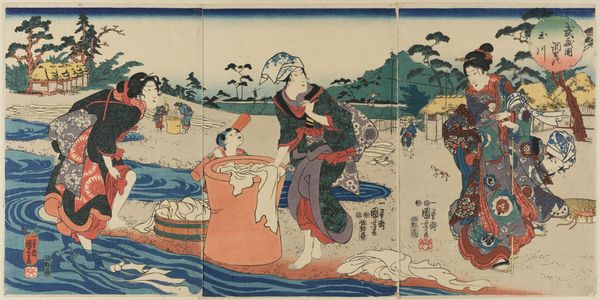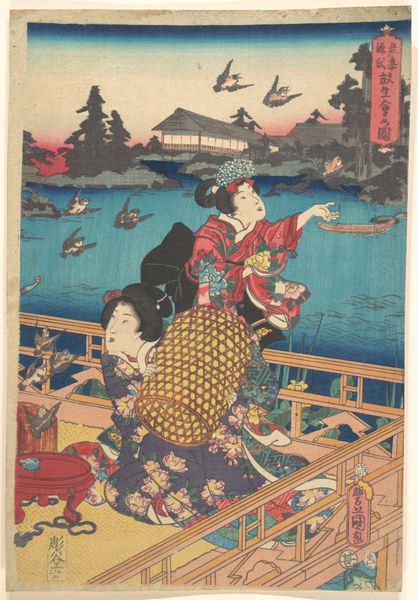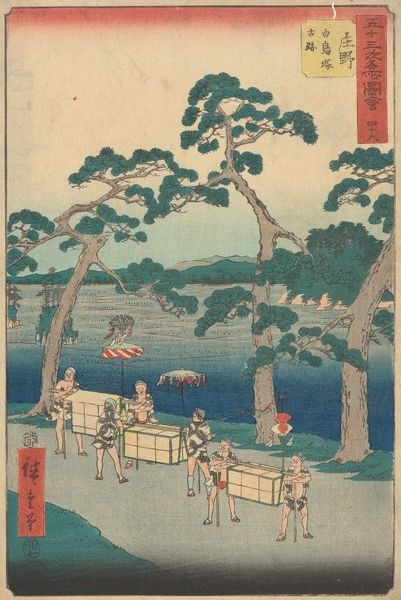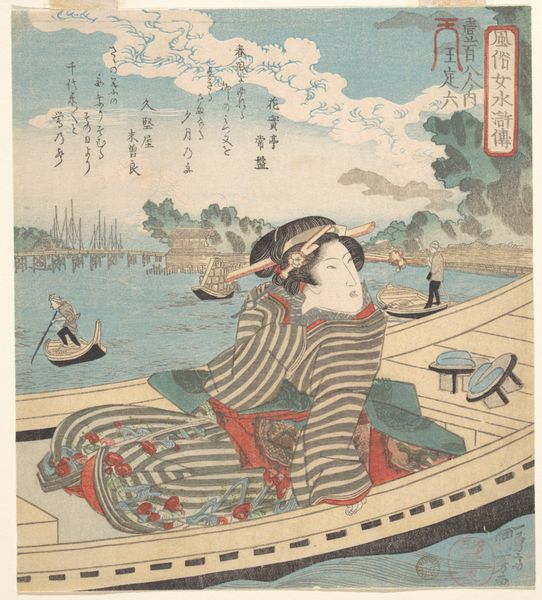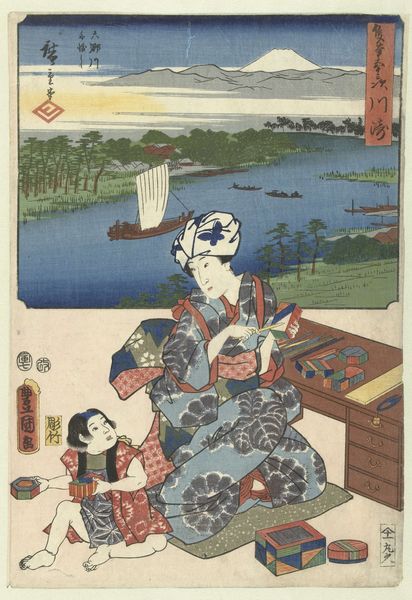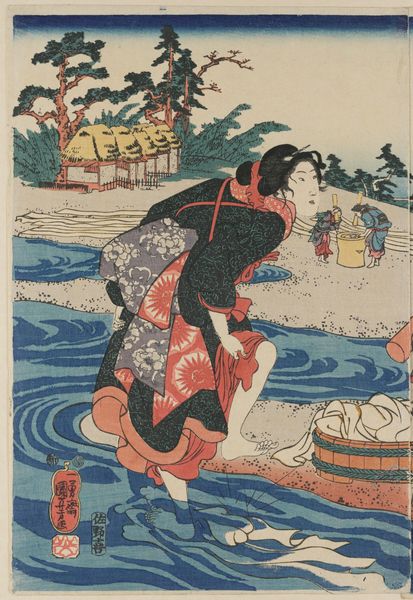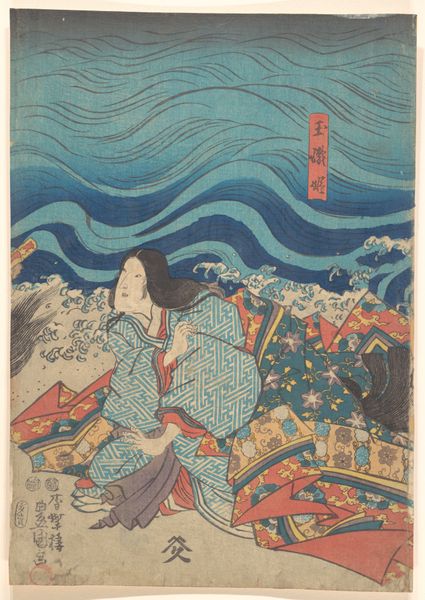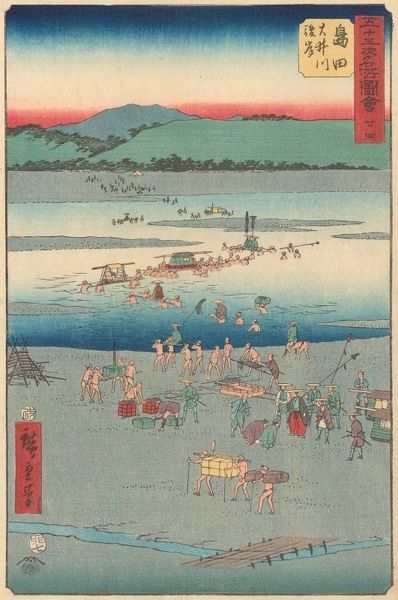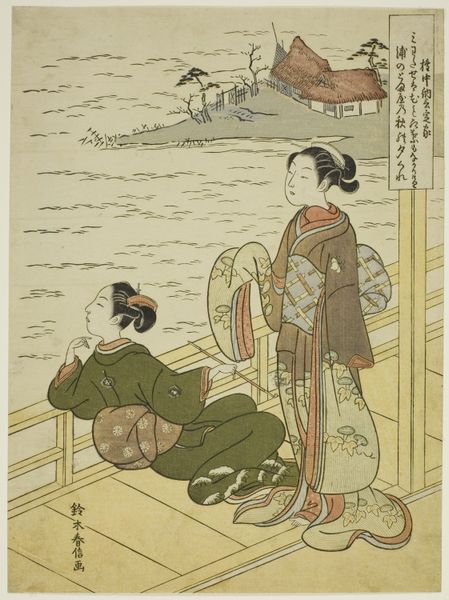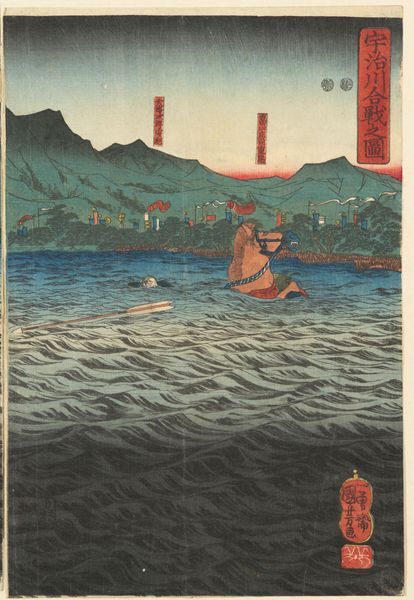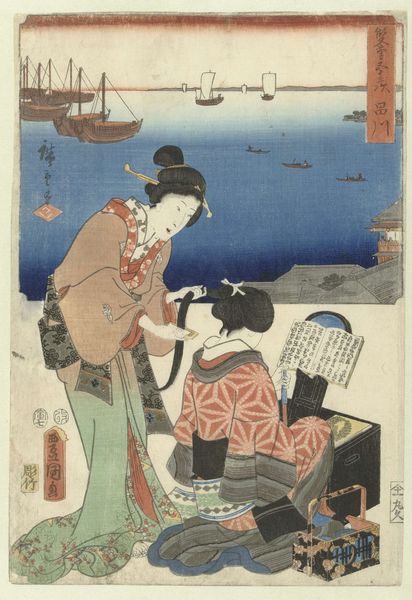
print, plein-air, ink, woodblock-print
#
ink painting
# print
#
plein-air
#
asian-art
#
landscape
#
ukiyo-e
#
figuration
#
ink
#
woodblock-print
Copyright: Public Domain: Artvee
Curator: Let’s dive into this captivating woodblock print, "Fording a Broad River," created by Utagawa Hiroshige around the 19th century. Editor: My first thought? That’s… chaotic! So many people in the water. And look at the waves—they're almost animated, but in this weird, staccato style. It feels both dynamic and slightly unnerving. Curator: That “chaotic” feeling speaks to a time of bustling river crossings. Consider that waterways like this were arteries of commerce and travel, teeming with human activity. The act of “fording” itself – wading across a river – takes on broader symbolic weight, invoking ideas about journeys, transitions, and passages from one state to another. Editor: Absolutely! It’s like a mass crossing. Though there's an element of class distinction on display too, right? Those people aren't just casually taking a dip. Are the figures pushing the rafts servants? Curator: It is likely a scenario where poorer citizens transport those who can afford to travel above the water. Note the individuals seated, holding parasols as if immune to the toil below. It illustrates a system dependent on the physical labor of others. This dynamic echoes throughout historical depictions of river crossings. The water itself serves as a stage upon which societal structures become apparent. Editor: The almost humorous grimaces on those in the water. There’s definitely a story here about societal roles, isn’t there? It feels strangely contemporary… Curator: Think about ukiyo-e as a genre reflecting “the floating world.” Pleasure, leisure, and a detachment from everyday burdens were major themes. This river scene captures that very fleeting, temporary space, where identities blur within the larger flow of human activity. The figures could be anyone or nobody in particular. They embody something universal. Editor: Hmm. Detachment. Universal experience… I keep coming back to that wild water. It gives me this odd feeling like everything’s on the verge of being swept away. Maybe that’s the 'floating world' aspect—not just pleasure, but a kind of instability, a fleeting moment. Curator: Perhaps instability is exactly what Hiroshige intended to capture. By distilling it into form and color, he reminds us that transition, flux, and change are ever-present currents, both literally and figuratively, in the human experience. Editor: What a ride. Or a swim, rather. Makes you appreciate the power of art to find a larger, resonant story in even the seemingly mundane parts of the world.
Comments
No comments
Be the first to comment and join the conversation on the ultimate creative platform.

